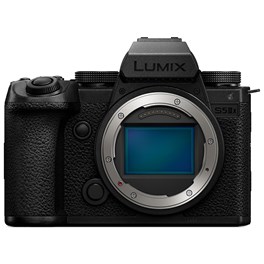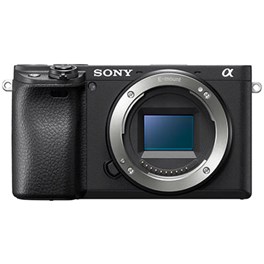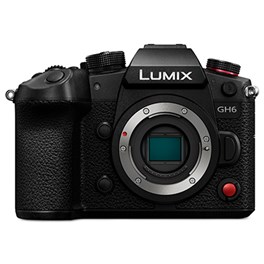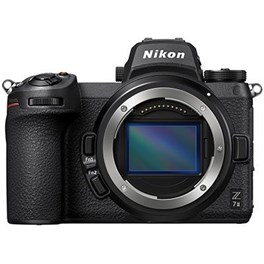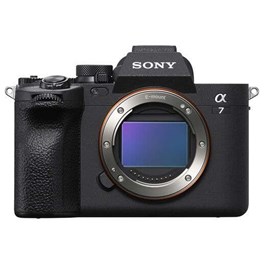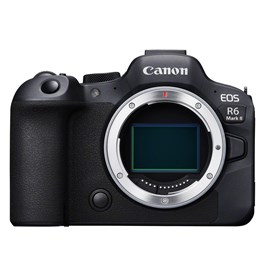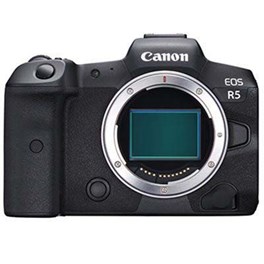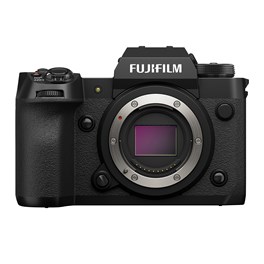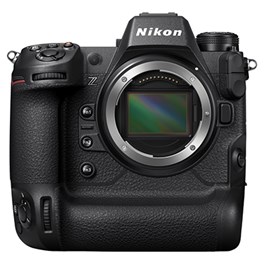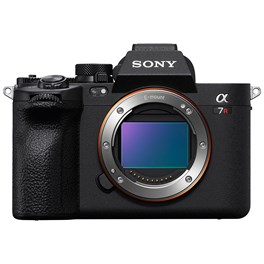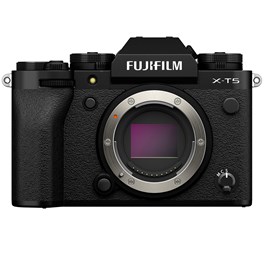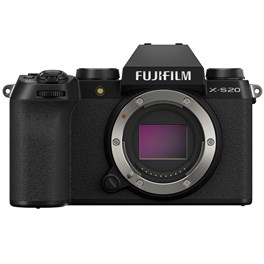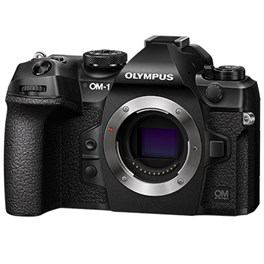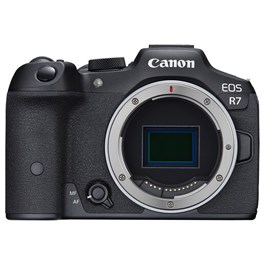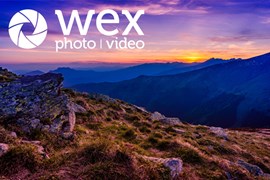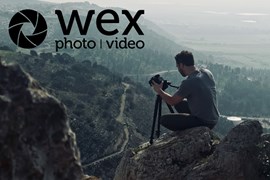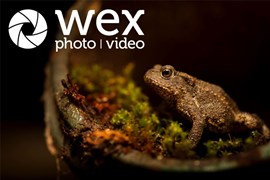
Looking for the best mirrorless cameras? We’ve put together this guide to mirrorless cameras to help you sort through the choices out there.
Different mirrorless cameras have different strengths. Some are designed to maximise resolution for detail and printing quality, while others are amazing in low light. Some are best for photography, others have class-leading video features. We’ve picked out all the best cameras around, and put together a few explainers if you’re new to all this and need a grounding in the basics.
We’ve divided this guide up into sections to make it easier to navigate – click the headings below to jump straight to the section of your choice.
Quick Navigation
Best Mirrorless Cameras for Video
Over the past couple of decades, video on consumer cameras has gone from being a cute afterthought to becoming a hugely exciting tool for filmmakers and content creators. While it was kick-started by the DSLR video revolution in the early 2000s, these days the best cameras for video are mirrorless. With cutting-edge sensors, lightning-fast processors and a range of resolutions and codecs to suit every user, these cameras are ideal for a video shooter on any budget.
For professional video shooters, there are plenty of options more sophisticated than the cameras we’ve listed here – our range of professional camcorders is where you want to be. Consumer video cameras like the mirrorless camera we’ve listed here offer the best balance between performance and price for the majority of users. Whether you’re making films on a budget, producing content for social media, starting your own YouTube channel, or just shooting for yourself, these are the best video cameras to get it done with.
Panasonic Lumix S5 IIX Digital Camera Body
The Panasonic Lumix S5 IIX is a new ground-breaking Lumix mirrorless camera. A first for Lumix cameras, Hybrid Phase Detection Auto-Focus detects subjects in difficult conditions and offers all-around AF improvements. The 24-megapixel sensor can record 6K video internally and up to 180fps in Slow & Quick capture. This version has additional Apple ProRes support with SSD and Atomos outputs.
£1,999.00 View
Pros:
- Designed for cinematic filmmaking
- Sticks with that award-winning design
- Exceptional image stabilisation
Cons:
- No tally lights for filmmaking
- Slight HDMI obstruction from the articulated screen
Last year, the Panasonic S5 took centre stage for our pick of the best mirrorless cameras for video. Time has passed but this year, the ball stays firmly in Panasonic’s court. The Panasonic Lumix S5 IIX is similar to its regular S5 II sibling but offers way more options for filmmakers.
With RAW video capabilities, ALL-I compression, direct-to-SSD shooting, Apple ProRes and streaming functionality, this compact hybrid camera could easily be part of a professional workflow. It’s impressive to us that there’s been no compromise here either. They are simply amazing additions to what the S5 II already has to play with.
It’s safe to say that if you are a photographer looking to make some video, a hybrid shooter or a solo filmmaker who needs an upgrade, the S5 IIX is a very sensible option. There’s not a lot it doesn’t cover and you have a huge number of lenses that will complement what this camera offers.
Sony A6400 Digital Camera Body
The Sony A6400 Digital Camera Body bridges the gap between Sony's massively popular full-frame CSC, and APS-C line-ups. The camera offers the world's fastest (as of writing this article) AF acquisition of 0.02 seconds. Users can enjoy the newly developed 'Real-Time Eye AF', and 'Real-Time Tracking'. The A6400 is also capable of capturing up to 11fps with AF/AE tracking, and includes a BIONZ X image processor, a tilt-able LCD touch screen, and 4k video recording.
£779.00 View
Pros:
- Advanced autofocus features
- Uncropped 4K
- Loads of E-mount lenses
Cons:
- Ergonomics won’t be for everyone
- SD slot only UHS-I
This unassuming APS-C camera is quietly one of the best choices out there for vloggers and amateur video shooters. The Sony A6400 uses the full width of its sensor to create great-looking 4K footage, with no pixel binning. And what’s more, users can also take advantage of the Hybrid Log-Gamma profile to deliver instant HDR workflows. You also get the advanced autofocus system of Alpha cameras, with Real-Time Eye AF built in, and Sony’s multi-year headstart on other mirrorless systems means there are heaps of E-mount lenses to choose from.
The slim form factor of the A6400 isn’t everyone’s cup of tea – if you like lots of physical buttons, this may not be the camera for you. Also, be aware that the card slot is the slower UHS-I type – it should be fine for most purposes, but may mean you’re waiting longer for footage to transfer off the card.
Panasonic Lumix GH6 Digital Camera Body
Since Panasonic’s last release, the GH series has evolved with innovative, user-driven features to become a first-choice, renowned tool for creators. With a 25.2-megapixel Digital Live MOS Sensor, updated Venus Engine Processor and 5.7K 30p internal video recording in ProRes 422 HQ, the Lumix GH6 is the latest addition to the series that continues to push the boundaries of mirrorless cameras.
£1,399.00 View
Pro:
- Updated video assist functions
- Greater post-production flexibility
- Exceptional 5.7K video quality
Con:
- Limited recording time in certain modes
The Lumix GH6 provides the highest level of image quality and versatility that’s needed for any level of video production. Equipped with both a next-generation 25.2-megapixel Live MOS Sensor without LPF (Low-pass Filter) and an updated Venus Engine with double the processing power, the GH6 continues Panasonic’s outstanding, professional video recording performance.
The Lumix GH6 is capable of 5.7K 30p internal video recording available in ProRes 422 HQ and ProRes 422 and offers both higher resolution and higher bit rates thanks to its 5.7K 4:2:0 10-bit 60p/50p and 5.8K 30p/25p/24p 4:2:0 10-bit anamorphic 4:3 modes.
Combined with the 12+ stops of wide dynamic range for pre-installed V-Log recording that expands to 13+ stops when using Dynamic Range Boost mode (Creative Video mode only), the GH6 produces high saturation imagery with rich gradation for clear and smooth HDR video.
Best Mirrorless Cameras for Photography
While pretty much all modern consumer digital cameras are hybrid cameras – meaning they shoot both stills and video – here we’ve picked out some of the finest mirrorless camera options for those who are photographers first. With plenty of megapixels, advanced autofocus systems, fantastic lens ranges and well-balanced bodies, these are the mirrorless cameras for immersing yourself in capturing the moment.
No matter whether you shoot landscapes, portraits, sports, action, wildlife, macro or astrophotography, these cameras should excel in your chosen field – as long as you pair them with the right lenses. Some of the systems we’ve included are relatively new and are still expanding their lens range, so if you’re jumping from a DSLR system and already have a lens collection, you may want to invest in a mount adapter to get the most use out of your glass. If you stick with the same manufacturer, you’ll generally get full functionality of AF and stabilisation.
Nikon Z7 II Digital Camera Body
Finance available
Designed for professionals, the Z7 II builds on the solid foundations of its predecessor. User feedback dictated how Nikon approached this camera and with that, they made improvements and upgrades that elevate this camera to an even higher standard. To provide increased productivity and professionalism whilst shooting, they added dual EXPEED 6 image-processing engines which significantly increase the speed of which the Z7 II can operate. They vastly improved the autofocusing system, working on the AF detection and tracking performance as well as upgrading the eye, face and animal AF for both video and stills. As well as this, the Z7 II has much higher frame rates which allow for confident shooting, without fear of missing a frame. A much-requested feature that's been added to this system is the addition of a second card slot. Yes - The Z7 II features one slot for XQD & UHS-II SD cards as well as a second slot for ultra-fast CFexpress memory cards. This camera is set to impress any working professional.
£2,949.00 View
Pros:
- Dual high-speed card slots
- Rich 45.7MP image quality
- Intelligent hybrid autofocus system
Cons:
- Screen not fully articulating
- Rivals offer better stabilisation
A refinement of an already winning formula, the Nikon Z7 II offers one of the best shooting experiences on the market. With 45.7MP of resolution to play with, photographers can capture absolutely gorgeous images, and while there’s plenty of scope for tinkering with RAW files, the out-of-camera JPEGs don’t look half bad.
The comprehensively featured hybrid autofocus system takes centre stage here. With ultra-wide coverage and 493 focus points, the Z7 II is capable of nailing the shot of pretty much any subject. The intelligent face- and eye-detection systems work extremely well, even when subjects are moving quickly and erratically. The 5-axis stabilisation system is also highly effective for hand-held shooting at slower shutter speeds – Canon and Sony arguably have it beat on raw power, but it still gives you tremendous flexibility in the field. For the simple art of capturing images, the Nikon Z7 II is an undeniable winner.
Sony A7 IV Digital Camera Body
Interest Free Credit Available
The wait is finally over! Sony has just launched their new A7 series flagship model, the Sony A7 IV. With an emphasis on versatility and performance across both photography and videography, this pro-level mirrorless camera stands as a must-have creative tool for professional image-makers. Discover what the A7 IV can offer you and pre-order now!
£2,179.00 View
Pros:
- Excellent low-light quality
- Highly effective 5-axis stabilisation
- Powerful, reliable autofocus
Cons:
- Slower burst mode than rivals
The A7 cameras with no extra letters in their name have always been Sony’s full-frame all-rounders, and the Sony A7 IV is the most versatile one yet. It’s an ideal choice for photographers because, well, it just shoots everything. No matter what you’re going up against, the A7 IV will handle it with aplomb. Working in low light? The backside-illuminated sensor delivers superb high-ISO performance, and you’ve also got the effective stabilisation system at your disposal.
Capturing images of fast-moving subjects? The autofocus is better and more sophisticated than ever, and the impossibly deep buffer lets you keep on shooting for longer. It can shoot up to 828 RAW+JPEG frames before needing to cool off under normal circumstances, but if you use a CFexpress Type A card in one of the high-speed slots, it’ll effectively keep going forever. Other rival cameras offer faster burst modes, but honestly, 10fps is plenty for the vast majority of shooters. You’re unlikely to miss the extra frames.
Canon EOS R6 Mark II Digital Camera Body
Raising the already high bar set by its predecessor, the Canon EOS R6 Mark II Digital Camera Body blends world-class performance with super-fast speed and unparalleled filmmaking features. A powerful 24.2-megapixel sensor can continuously shoot at 40fps, and can also record oversampled 4K 60p video or even 6K RAW. With other quality-of-life upgrades, shoot whatever you want however you like.
£2,779.00 View
Pros:
- Amazing deep-learning autofocus
- Faster burst than pro EOS R3
- Resolution bump from R6
Cons:
- Card slots are SD only
- You may want more than 24MP
The Canon EOS R6 Mark II is an incredibly fully featured camera. Canon’s published user manual for this thing is more than a thousand pages long, and once you’ve used it for a while, you start to appreciate why. The performance of this camera is quite simply world-class – when using the silent electronic shutter, it can achieve a burst speed of up to 40fps, which beats even the sports-focused EOS R3.
The deep-learning autofocus is freakishly good, able to nail sharpness on a huge variety of tricky moving subjects. What’s more, those who felt the 20MP EOS R6 was too low-res now have an extra 4MP to play with. This may still not be enough for some users (especially those who want to make large prints) but it’s realistically ample for most purposes. One thing to note – while the card slots are SD only, they’re UHS-II, and it’s worth making sure you get the fastest cards you can to keep up with this camera.
Best Hybrid Shooters
More and more, visual content creators are finding themselves acting as jacks of all trades. Being able to shoot both stills and video – and do them well – is a real asset for anyone looking to make their mark in the digital imaging landscape of 2023. As such, it pays to have a camera that’s capable of keeping up with you in both realms, allowing you to seamlessly switch between modes depending on the situation.
This is where versatile mirrorless cameras truly come into their own. The light, portable bodies of the cameras perfectly complement their high-speed shooting capabilities, and even in lower-end models, you’ll generally get significantly better video quality and more video options than you would from a DSLR.
So, we’ve picked out our favourite mirrorless cameras for those who like to do a bit of everything. Want to seamlessly switch from shooting superb stills to high-quality video and back again? These mirrorless cameras are our top picks.
Canon EOS R5 Digital Camera Body
Free 3LT Tripod worth £300
Truly shaking up the market, the Canon EOS R5 is packed with new technology and major improvements that sets it aside from its competitors. The Canon R body has been designed for professional photographers and videographers alike, allowing you to elevate your practice to the next level. It's been equipped with an all-new 45MP CMOS Image Sensor & DIGIC X Processor that is capable of incredibly detailed 45MP stills and 8K video footage. Combining Canon's Dual Pixel CMOS AF system and a blisteringly fast 20fps mechanical shutter, you'll be able to accurately capture every moment of the action with precision. Then, there is a game-changing new addition which is a Canon first: The R5 is the very first Canon camera body to feature a 5-Axis IBIS system that is compatible with the RF and EF optically stabilised lenses; producing shake-free and smooth video footage. It's a true marvel of the photographic world.
£3,799.00 View
Pro:
- Top-notch image quality
- Huge video versatility
- Sophisticated EOS R lens mount
Cons:
- Recording limits on some video modes
Designed for professional photographers and videographers, especially those content creators who might dabble in a bit of both, the Canon EOS R5 is the blueprint for the kinds of cameras we’ll be seeing over the next decade.
This camera is absolutely crammed with top-of-the-range features. There’s the brand new 45MP CMOS sensor, which is capable of shooting 8K footage, or 4K footage at up to 120fps for super-slow motion in pristine high quality. The mechanical shutter can burst-shoot at up to 12fps, and when you pair this with Canon’s Dual Pixel CMOS autofocus system, you can virtually guarantee that you’ll never miss a moment.
All this is housed in a DSLR-style body, with a 5-axis stabilisation system and a new long-life battery. Shooting faster, better and longer is a matter of ease with the Canon EOS R5, and we’re excited to see where this journey takes us next.
Fujifilm X-H2 Digital Camera Body
The X-H2 is a powerful multimedia tool combining high-end photographic and filmmaking features to meet the demands of every shooting scenario. With a new 40.2MP X-Trans CMOS 5 HR sensor and the notorious X-Processor 5, this is the first in the X series to deliver Pixel Shift Multi-Shot for 160MP images. And, with a native 8K video resolution, the X-H2 is an incredibly comprehensive hybrid shooter.
£1,849.00 View
Pros:
- 40.2MP sensor with 160MP multi-shot mode
- 8K video with full suite of recording options
- Deep-learning AI autofocus
Cons:
- X-H2S is faster
- Extended 8K shooting may require cooling fan
Fujifilm had an absolute banner year in 2022, releasing a slate of truly exceptional cameras. We could have picked a lot of them for this slot, but we’re opting for the Fujifilm X-H2 as it provides the best balance of all features.
Stills shooters have that 40.2MP sensor, with an improved image-processing algorithm, which is capable of capturing truly immense levels of detail. And if 40MP isn’t enough for you, the Pixel-Shift Multi-Shot mode uses image stabilisation to record 20 frames in a single shutter, and combine them into one monster one DNG RAW file with 160MP of resolution. Elsewhere on the camera, you’ve got the electronic shutter that can achieve speeds of 1/180,000 sec.
Video shooters, meanwhile, can enjoy 8K 30p video recording internally in 4:2:2 10-bit colour. There’s a 2x digital zoom available when recording 4K, the F-Log2 colour profile for maximising dynamic range, 5-axis in-body image stabilisation that provides seven stops of compensation, and the ability to record ProRes Raw or Blackmagic Raw via HDMI.
Nikon Z9 Digital Camera Body
Demonstrating Nikon’s mastery of photographic design, the Z9 is a true feat of engineering and intelligent ergonomics, with a stacked 45.7 MP full-frame CMOS sensor and ultra-fast EXPEED 7 processer to deliver astonishing image quality. Combined with Nikon's advanced AF system, the Z9 is built for speed, offering exceptional performance across both photography and videography applications.
£4,999.00 View
Pros:
- Incredible speed-shooting capabilities
- Full slate of 8K video options
- Advanced cooling system
Cons:
- May be overkill for most users
Arguably, this is the professional camera to beat right now. The Nikon Z9 is an outstanding achievement, a machine that really can do everything and more. It’s so fully featured in stills and video that it seems almost a shame to only use it for one or the other – which is why it’s so perfect for hybrid shooters.
Stills shooters get greater speed than ever. The burst rate of 20fps at full-resolution 45.7MP is impressive, but drop that resolution down to a still-serviceable 11MP, and you get a staggering 120fps burst rate. With autofocus performance that’s absolutely class-leading, powered by AI, this is a machine to capture just about anything.
And for video? Well, the 8K resolution in a range of codecs and formats is something of a given for a camera at this level. However, the Nikon Z9’s ace in the hole is its heat dissipation technology, which enables the user to record 8K video continuously for up to 125 minutes!
Best Mirrorless Cameras for Portraiture
Portrait photography is its own particular discipline, and we’ve picked out our favourite mirrorless cameras that are especially suited to it. Whenever you’re buying a camera, you’re likely going to be prioritising certain features in accordance with what you’re planning to shoot.
So what do portrait shooters need? Well, sensor resolution is an advantage, as you may want the option of printing out your portraits in large format. You don’t need to worry too much about burst rate, as your subjects will hopefully be standing still and not running away from you. This also means autofocus isn’t a critical priority, although having Eye AF is certainly an advantage, as focusing sharply on the eyes is critical in portraiture.
Also, with mirrorless cameras, it pays to think about lens selection. Having access to a good range of large-aperture lenses with character will really make your portraits sing and give them that extra quality to stand out from the crowd. With that in mind, here are our picks…
Sony A7R V Digital Camera Body
Building on the A7R IV, the Sony A7R V sports the same powerful features and adds some new ones. The A7R V captures stunning 61MP photos as well as amazing 8K video. Thanks to the BIONZ XR processor, AI realtime autofocus with 693 phase-detection points means fast-moving subjects will always be rich with detail. With smart video and design features, the A7R V sets a new high bar in the A7 series.
£3,699.00 View
Pros:
- Rich, high-resolution photos
- Sophisticated eye-detection AF
- Large E-mount lens catalogue
Cons:
- No in-camera raw conversion
- Menu system quite complex
The latest of Sony’s high-resolution flagship cameras, the Sony A7R V is a 61MP behemoth capable of resolving outstanding levels of detail. Its AI-based autofocus system makes it an ideal choice for portraiture – it is quite simply freakishly good. It’s better than ever at locking onto human subjects, and is uncannily able to find the eyes again and again, even when they’re partially obscured. With loads of E-mount lenses to choose from, not only from Sony but also third-party manufacturers like Sigma and Tamron, you can really customise your portraiture setup to make it work for you.
Also still available is the Sony A7R IVA, which uses the same 61MP sensor and still boasts a lot of the same features. If the A7R V is a little beyond your price range, this predecessor is well worth looking at – it will deliver absolutely exceptional results.
Fujifilm X-T5 Digital Camera Body - Black
Fujifilm’s X-T5 Digital Camera Body is a step above from the X-T4 that is more akin with the flagship X-H2 camera. Capture stunning images with the 40MP X-Trans CMOS sensor and powerful X-Processor 5. For videographers, the camera can capture gorgeous 6.2K, 10-bit 4:2:2 video and externally record Apple and Blackmagic RAW codecs. With ease-of-use features too, this is a small but mighty camera.
£1,449.00 View
Pros:
- Gorgeous images straight out of camera
- Superb X-mount lenses
- Sublime handling
Cons:
- … not many!
- LCD is 3-way tilting, not fully articulating, if that bothers you
A classically styled mirrorless camera with timeless appeal, the Fujifilm X-T5 is a beautiful bit of engineering, and is perfectly set up for portrait photographers. You’ve got plenty of resolution from the 40MP X-Trans CMOS sensor, as well as seven stops of in-body image stabilisation. The classic dial-based layout is immediately easy to understand and use, and the body is still lightweight – it’s even 50g lighter than the previous X-T4.
However, the real ace in the hole for portrait photographers is the superb range of Fujifilm X-mount lenses. Sharp and full of character, with generous wide apertures, they are pitch-perfect for portrait photographers, and the perfect choice for getting the most out of the X-T5’s high-resolution sensor.
There aren’t many points against the X-T5 for portrait photographers. Unless you really can’t live without full-frame, it’s a surefire hit across the board, and we can recommend it without hesitation.
Best Mirrorless Cameras for Travel
Mirrorless cameras are ideal for travel. While the flagship pro models are getting bigger and bigger, there are still plenty of choices that are small and pocktable, making them ideal for taking on trips, slipping into bags and coats to capture fleeting moments wherever you go.
A good travel camera should also be relatively easy to use, able to capture great imagery without requiring too much fiddling in the menus. You should be able to enjoy the moment, after all, without the camera getting in the way. A good lightweight lens selection is also a bonus – as such, we’ve got a couple of Micro Four Thirds cameras in our recommendations.
If you’re looking to travel in 2023, and want a high-quality camera to record your adventure, these are our recommendations. These capable mirrorless cameras will get the job done in all situations, and help you record and share your experiences no matter where you go.
Fujifilm X-S20 Digital Camera Body - Black
In line with Fujifilm’s dedication to tried and tested technology, the X-S20 pairs its 26.1MP X-Trans 4 BSI CMOS Sensor with the high-speed image processing engine ‘X-Processor 5’. This masterful combination gives way to improved 6.2K 30P 4:2:2 10-bit internal video recording, an upgraded Hybrid AF system, and dedicated vlogging modes to inspire a new generation of creatives to push the boundaries.
£1,149.00 View
Pros:
- Compact and lightweight
- It has an excellent battery life
- Tonnes of lenses to choose from
Cons:
- It’s not weather-sealed
- Some may find the EVF small and tricky to use
The Fujifilm X-S20 has quite an impressive spec sheet and it’s those features that make it great for travel photography. While there are smaller cameras on the market, the X-S20 is still smaller than your X-T5’s and offerings from Canon and Nikon. Plus, Fujifilm has loads of lenses to choose from that are travel-friendly but of course, you still have the opportunity to use their larger lenses when you’re back from travelling.
Packed into this camera is a slew of features including a 26MP X-Trans BSI-CMOS sensor, 5-axis in-body image stabilisation, loads of stills options and it can shoot DCI and UHD 4K at up to 30p with 10-bit F-Log and F-Log2 support. With all that power and flexibility (in a comparatively small camera), you’re pretty much covered for any eventuality while travelling.
OM SYSTEM OM-1 Digital Camera Body
The flagship OM SYSTEM OM-1 is a revolutionary Micro Four Thirds camera that features next-generation technology. Delivering high image quality that goes beyond the expectation of the sensor size, the OM-1 benefits from computational technology, autofocus and sequential shooting performance that far surpasses conventional models, and dramatically improves basic functionality.
£1,384.00 View
Pros:
- Compact and lightweight
- Impressive autofocus capabilities
- High frame rate for continuous shooting
- Excellent stabilisation for shooting handheld
Cons:
- Large files take a while to transfer
The OM SYSTEM OM-1 camera is everything you need to capture stunning fleeting moments out in the wide world. The incredibly impressive 1053 cross-type autofocus points, 3x faster Trupic X processor and Micro Four Thirds 20.3MP backside-illuminated live CMOS sensor positions the OM-1 as a first-rate autofocus beast.
Combined with the lightweight design, eight stops of Image Stabilisation and high frame rates for continuous shooting, the OM-1’s specs far surpass the capabilities of its predecessors for exceptionally reliable handheld use. The OM-1 also meets IP53 dust and splashproof standards and is freezeproof up to -10°C – perfect for capturing everything from wildlife to landscapes whilst out in even the most punishing environments on the road.
Canon EOS R7 Digital Camera Body
The EOS R7 camera continues Canon’s legacy of formidable next-generation mirrorless tech, packing precision autofocus, state-of-the-art image stabilisation and incredible speed. This RF-mount camera with an APS-C sized sensor provides the ideal balance between resolution, speed and low-light performance for a truly hybrid result that’s capable of competing with other professional full-frame models.
£1,379.00 View
Pros:
- Fast shooting and sophisticated AF
- Impressive stabilisation
- Lightweight and handles well
Cons:
- RF lens range still growing
- No optional battery grip
The Canon EOS R7 is not only an ideal gateway drug into the wonders of the EOS R mirrorless system – it’s also a great choice of travel camera. Lightweight and easy to handle, the EOS R7 boasts an impressively high-spec 32.5MP APS-C sensor. In many ways, it can be considered a spiritual successor to Canon’s popular EOS 7D Mark II DSLR (that “7” in the name feels like a clue). It’s a capable camera for the vast majority of subjects, and any travel photographer will find it handles itself well in a broad range of shooting situations. It’s no slouch for video either, with uncropped 4K 60p and a mic port if you want to bump up tour audio quality. For roaming photographers and vloggers alike, the EOS R7 is a fully featured camera. The RF lens range is still a little limited, but it’s only set to expand in years to come.
Best Mirrorless Camera Buying Guide

It’s easy to get confused trying to get your head around which mirrorless camera to buy. We’ve put together this section of the guide for anyone who’s new to all of this and feels themselves getting a little bit lost among the names, numbers and letters. First up, let’s take a look at what actually defines a mirrorless camera.
What’s the difference between a mirrorless camera and a DSLR?
This is one of the most common questions we get at Wex, so we’ll try to answer it as simply as possible.
The key difference between a mirrorless camera and a DSLR is that a DSLR contains an internal mirror mechanism that allows it to have an optical viewfinder. Mirrorless cameras lack this – hence the term “mirrorless” – and therefore will provide different ways of framing your subject. Some will just have an LCD screen, which may be fully-articulating, a tilting touchscreen or fixed in place. Others will also provide an electronic viewfinder – essentially a mini-LCD for the eye.
As far as concrete definitions go, that’s really it! There are a lot of features common to each type, but there are exceptions to every rule. For instance, DSLRs tend to be more ruggedly weatherproof and have a pronounced handgrip, while mirrorless cameras tend to be smaller and lighter. This is generally true, but not always – for instance, the Canon EOS R5 is not a DSLR, but resembles one in build and handling, to the point where an ordinary person wouldn’t really notice any difference.
Mirrorless cameras also tend to be better for video, particularly in terms of video autofocus. This is again because of the mirror mechanism – mirrorless cameras can make use of on-sensor phase-detection autofocus for video, while DSLRs can’t because their mirror is flipped up when shooting video. However, many newer DSLRs like the Nikon D780 are improving their video specs to the point where there isn’t a whole lot in it.
There’s no right answer in the question of mirrorless vs DSLR. It’s all about figuring out your needs as a photographer or videographer, and determining what suits you best.
Glossary
If you’re new to photography and videography and find all the technical terms hard to keep up with, we’ve put together this quick guide to help you with some of the jargon.
Aperture
The aperture of a lens is the opening that allows light to access the camera sensor. It is expressed as an f-number, generally formatted as f/4, f2.8, F1.8 or similar. The lower the number, the wider the aperture, and the more light gets in. This is useful both for shooting in low light and for creating a shallow depth of field (more on which below).
A lens’s maximum aperture will generally be listed in its name. Shooting at the widest setting a lens can go is referred to as “shooting wide open”. The trade-off is that the optics required to give lenses large maximum apertures are both large and costly, so these lenses tend to weigh and cost more. Shooting wide open can also result in a loss in sharpness, though this is becoming less of an issue as optical technology improves.
A recent lens notable for its large maximum aperture is the Fujifilm XF 50mm f1.0 R WR Lens.
Depth of field
Depth of field refers to how much of an image is in focus. A shallow depth of field means that a very narrow plane of an image is in focus, with the rest blurred. This is good for portraits, where you want your subject to stand out from their background. In an image with a larger depth of field, more of the scene is in focus. This is ideal for landscapes, where there tends to be a lot of interest at different distances from the camera.
Dynamic range
This refers to a camera sensor’s ability to handle different shades of light and dark. A sensor with poor dynamic range will lose detail in the brightest highlights and darkest shadows of an image. The more dynamic range, the more detail you can retain in an image.
Electronic viewfinder (EVF)
Many mirrorless cameras possess electronic viewfinders, commonly referred to as EVFs. These are mini-LCD screens designed to simulate the optical viewfinders found on DSLRs. Once derided as laggy and poor quality, EVFs have improved greatly, and have the advantage of being able to display settings information alongside the image the camera is pointed at. The best EVF on any mirrorless camera right now is probably on the Panasonic Lumix S5.
ISO
On a digital camera you have the ability to set the ISO. This determines how sensitive the sensor is to light – a higher ISO setting means the sensor will take in more light, meaning it sees better in the dark. The trade-off is that this causes an increase in unwanted image artifacts, generally referred to as “noise”. If a camera is described as having good high-ISO performance, it means that it can produce images at high ISO settings with minimal noise. The best mirrorless high-ISO camera is the Sony A7S III, by some distance.
Kit lens
You may hear this term banded about when referring to entry-level cameras. A kit lens is essentially an entry-level lens, affordable and practical and often available as part of a kit with an entry-level camera – hence the name. Kit lenses tend to cover standard focal ranges like 18-55mm and have maximum apertures that top out at around f/3.5.
Phase-detect / contrast-detect / hybrid autofocus
Phase-detect and contrast-detect are the most common types of autofocus, and you’ll likely hear these terms crop up in a discussion about mirrorless cameras. One could write reams explaining the difference between the two, but let’s quickly run over the basics as that’s all you really need.
Phase-detection autofocus is a newer technology that uses the camera sensor. It effectively splits the image into two “phases”, measures the difference in point of focus between them and calculates accordingly how much to move the lens. It was most commonly found in DSLRs initially and is a fast way to find focus.
Contrast-detection measures contrast through the lens, and adjusts the optical system until it detects the optimal contrast level between pixels that means the image is in focus. It is slower than phase-detect, but tends to be more accurate.
Hybrid autofocus, as you might have guessed, uses both of these at once. This allows for faster-than-ever autofocus performance. The fastest autofocus camera right now is the Sony A6600, which in optimal conditions can achieve focus in as little as 0.02 seconds.
FAQs
What is the best mirrorless camera for travel and wildlife?
If you’re planning on using a mirrorless camera for travel and wildlife photography, you want something lightweight but powerful. A great autofocus system is a must as well. We’d recommend the OM SYSTEM OM-1, which we’ve already mentioned as the fastest autofocus mirrorless camera around right now. If your budget won’t stretch that far, try cameras in Sony’s range like the Sony A6600, Sony A6400 or even the Sony A6000.
What is the best mirrorless full-frame camera?
This is an intensely competitive field, and there’s no real right answer. As with everything in photography and videography, it depends. But, if we were pushed, in terms of raw specs, the best mirrorless full-frame camera right now is probably the Canon EOS R5.
Which mirrorless camera has the best battery life?
Battery life can be an issue with mirrorless cameras. This is an area where DSLRs do have an edge. However, some manufacturers have made an effort to make mirrorless cameras with good battery life – probably the best example is the Olympus OM-D E-M1X, which has low-power modes that allow it to shoot up 2,580 images on a single charge.
Which is the best mirrorless crop sensor camera?
If you’re looking at crop-sensor mirrorless cameras, we definitely recommend the Fujifilm X-T5. It’s one of the most versatile cameras around, and its X-Trans sensor is a superb technological achievement.
Which is the best mirrorless camera with a kit lens?
If you’re starting your mirrorless journey, it makes sense to get a camera with a kit lens included, so you have everything you need to get started right away. We’d say the Panasonic Lumix DMC-GX80 with 12-32mm lens is an ideal choice, small and affordable, but highly capable.
How do we decide?
Our in-house photography experts, store staff and partners all work collaboratively to pour over these guides. The cameras and equipment recommended in our guides are based on their personal opinion, empirical experience and of course, feedback from our customers.
We way up price, features, quality and the all-important 'je ne sais quoi' to make sure we recommend products that will delight and inspire.
If you would like more advice on any purchase our contact centre staff are here to help. Alternatively, you can reach us via email or social media.
And don't forget. If you were to purchase anything based on our recommendations you'll be covered by our full returns policy
Buying Guides

